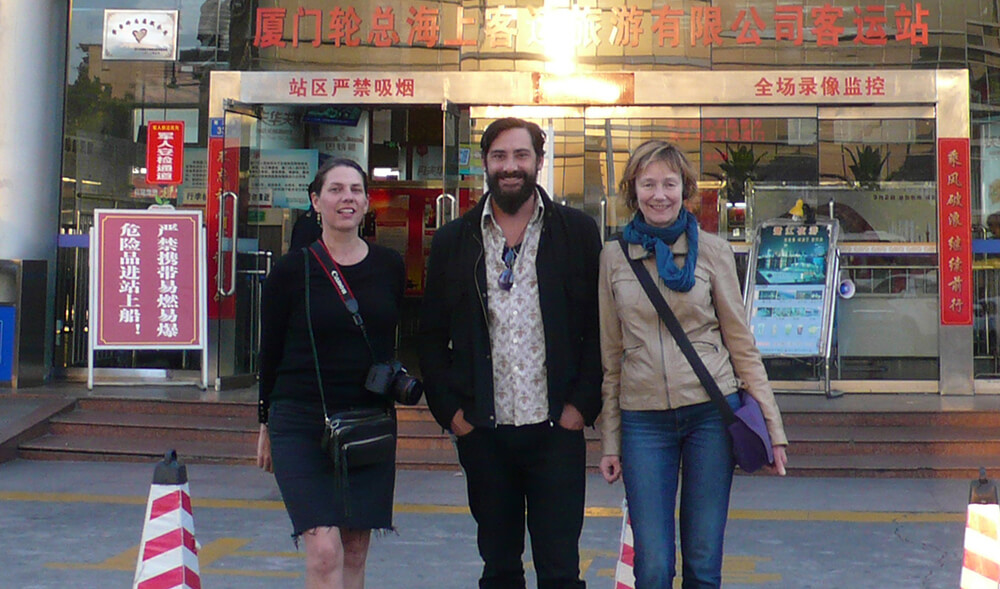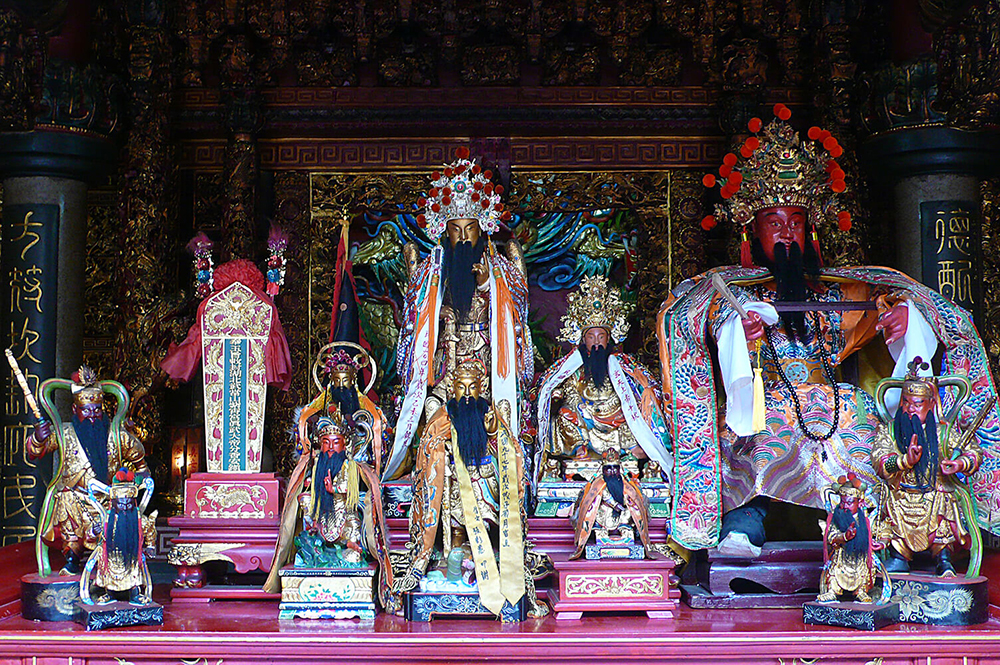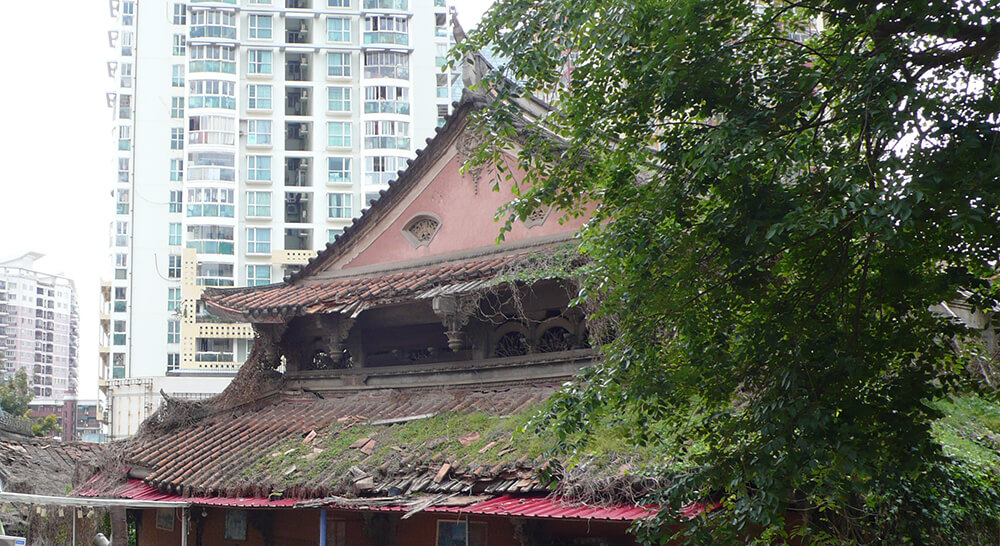Workshop, Kinmen trip, sexy trees
May from CEAC has come home from hospital and is recovering well! Other changes are that Ben, the only other resident apart from me and Tara, has gone back to Australia, and Tara’s husband has arrived.

My explorations of the town continue, though it’s getting warm, and in the daytime nicer inside where the air runs through. I haven’t used the air conditioners yet – very present in every room – but see it coming I will, some of the neighbours are already buzzing away.
I started to work on the super thin rice paper, both big and small sheets. It has a complete different reaction to the ink and the brush than the thicker papers I’m used to. Simultaneously I’m following now three times a week calligraphy and Chinese painting lessons with Sheng lao shī. A confusing combination, specially the classical Chinese painting is very different from my own process-based working methods. But confusion leads to unexpected outcomes and at the moment I just take it all in, make impossible paintings at home, and give it time.

And I have done some teaching. Through meeting a few professors from the university I was invited to do some workshops and a lecture, and last week I already did the workshops: three mornings in a row, to a nice group of 25 foundation course students. Many of them have already excellent drawing skills. I understood from their professor, Linlin, who also translated for me, that it’s quite difficult for a student to get accepted here. In general nineteen/twenty year old are very much the same all over the world I guess. Maybe here they are a bit more diligent, and more silent and shy when it came to talking about their drawings. In the same time their work sometimes was surprisingly world conscious. Point of departure was my El País series. They brought Chinese newspapers, brushes and ink and made work that was interesting to me, also because some of them were quite daring with their content.

My birthday fell on the day my visa was to expire, so I made a short ferry trip to Kinmen, a small Taiwanese island, which appeared to be rural and quiet compared to Xiamen, quite refreshing. After getting the necessary stamps in my passport (twice past stern looking customs) I took the bus to it’s small capital where I had lunch, visited a lovely temple I stumbled upon and went back again, had the custom ceremony again in reversed order, and another 30 days in China! In the evening a small celebration with some friends in a restaurant and afterwards some nice home brewed beers (China is not a whine country) in a bar with the beautiful subtle name of Fat Fat Beer Horse.

I suppose every City of enormous China has it’s own characteristics, but people keep telling me here that no city is as green and as clean as Xiamen. I start believing them. Amazing plants and trees indeed are almost everywhere and well kept; along the roads, in the many parks and around the often super high buildings. The enormous university is also dominantly present. It has three large and beautiful campuses, only accessible through a few guarded gates, in front of which there are often large queues of visitors waiting to get in. The campuses have an outspoken architecture and a giant student population, many young people everywhere.

And, I wrote it before, tourists. They come to photograph and film themselves in the parks, the university (one of China’s ten most famous and prestigious ones) and on the immaculate sand beaches. To breathe the relatively clean air and to cycle unsteadily through my neighbourhood steadily ringing their bells. And with them are the souvenir sellers, the tourist restaurants and shops co-creating this holiday-like air, though all Chinese, no foreigners. And of course it’s indeed fantastic to have the sea so near. Especially in the morning and the evening I enjoy walking the long board walk. It offers great views and I particularly like how you can see the rocks from there.

Still, I miss a bit a feel of history, of grounding, with all these temporary residents, like of course I am too. The few old buildings are mostly in decay or, as I heard, demolished in the last decades, though there are a few beautiful old temples. The history here I sense mostly in the people working in the many out-door and semi-outdoor food markets and stalls, in their knowledge of foods, of herbs and thousands of ways to prepare them. And in the craftsmen who are not abundant, but still present and often on the street, like shoemakers and seamstresses.

Next weekend, with an art professor and a few students from the university, I’ll bring a visit to Quanzhou, a much older port city a bit towards the north. There I hope to sense some history and breathe in some dirty air haha.
Here I love the parks. I have visited a few and am totally amazed by the variation of beautiful plants and the exquisite garden architecture with stone steps, bridges, all build on rocks, which also form an essential part of their beauty. The first time I had prepared myself for a stroll, but found out that instead of strolling it was walking up and down the stairs. But what stairs. In some parks there are so many narrow stone carved steps it reminds me of Piranesi.

Each tree has it’s own beauty but there’s one kind here I particularly like: very sexy and often bearded. A tree, that’s right, haha. I’m making loads of photos of its intriguing postures. Yesterday Mr. Zhu, a CEAC relation who helps sometimes with phone- and internet trouble, told me the Chinese believe that trees have souls, and, living here, I agree.

Coming Thursday is the lecture about my work for the art department, and they want a lot of info beforehand to prepare the translation, so I better get back to work. Write to you soon again!